With the way most of us live in modern times we do not tend to think about long term food stockpiling. I get it, I really do. We have fast-food joints on every corner, refrigeration, microwaves to cook pre-packaged foods, and a huge assortment of other options.
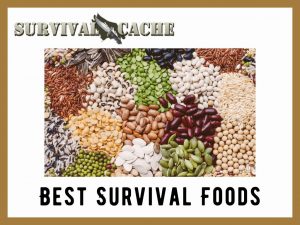
But with the state of current affairs, I would hope that people’s eyes have been opened as it pertains to the supply chain and how it can be affected.
I also understand that the task of building up supplies can be a daunting one. But let me offer a bit of advice.
SKIP AHEAD
Getting Started with Food Stockpiling
Start Small
I have never met one person who bought ten- or twenty-years’ worth of food in one purchase. Every one of them accumulated their emergency supplies through years of hard work, budgeting, and discipline. Start small by purchasing one or two extra items every time you go to the store and set it aside for your emergency supplies.
Getting Started Blueprint: If you want an ultimate blueprint to putting together a stockpile that will last and be kept safe, then you need to check this video out.
Start Now
Because putting away emergency food can be a daunting task it is also a one that is easy to put on the back burner. Take the above advice and start small and start now. Think of it like this. If you start today, you are that much better off in two weeks.
Don’t Forget
Here are a couple other important factors you need to remember when it comes to long term food items.
- Do not put all your eggs in one basket. I once knew a person who put most of their food stores in several chest freezers. Hopefully, you can see the problem with that because after three days of no power, all that food is no good. Remember to diversify.
- Do not forget cookbooks or recipes that are written down. Nowadays most of use the internet for cooking recipes. But what if the power was out or the internet was not available?
- Do not forget the cookware and heating source. Do you have alternative ways of cooking if normal methods are not available? It would be helpful if you included backup cookware and a means to heat the food, such as a BBQ grill or cooking over a firepit.
Survival Food Storage
For maximizing shelf life, most of the items on the list should be kept in
- Mylar bags with or without oxygen absorbers, or
- Vacuumed sealed bags, and
- Stored in areas that are dry, cool, and dark.
Max Shelf Life: If you want an ultimate blueprint to putting together a stockpile that will teach you how to maximize shelf life, then you need to check this video out.
What NOT to Stockpile – and Why
Not all foods make good stockpiling staples. Some of these foods might even be dangerous to keep in storage.
- Acidic foods such as canned tomatoes cannot be kept in storage for long periods of time. Due to the acid content, cans are more likely to degrade and might leak or become outright toxic.
- Grains and other mold-prone foods are best kept as far away from oxygen and moisture as possible. Vacuum sealed is best.
- Dented or rusted cans should be disposed of immediately.
Also remember that the worst enemies of stockpiled and stored foods are light, temperature changes, oxygen and moisture. These factors are all potential triggers for bacteria, decay, degradation or the growth of mold. Keep foods away from these factors and they should last for longer: This is reason most stored products advise storage in a cool and dry area.
What Happens to Food Past the Expiry Date?
There are some foods that can be fine for years past the expiry or best-before date, but this is not true for all types of food. Different things can happen to different types of food when going past their prime – and some types of food has the potential to be dangerous (such as canned meats) while others will only lose their potency or effect (such as dried yeast or tea)
This list will tell you which foods are safe to stockpile, approximately how long they are safe to keep for past their stamped best-before date – and how you can tell when it has reached past this point.
Always checked stored food before preparation or consumption. The single most obvious way to tell when food has gone “off” is through smell: At the first trace of mold, moisture or decay, it should be discarded or you risk the consequences of food poisoning or worse.
Best Foods for Survival and Stockpiling
One last thing before getting to my list. Even though the following list is mainly made up of staples, it is what works for me. Personalize it for you, your tastes and change out items as needed in case of allergies. It is also not an all-inclusive list but meant to be a foundation on which to build on. Now that I have the basics out of the way, listed in no particular order, here are 25 food items to be stocked

Water. I know, I know water is not a food. But water is critical to our survival and an essential ingredient in most cooking. According to the rules of three we can survive three weeks without food but only three days without water. So, make sure you have plenty of water stored up in bottles, jugs, or barrels. Store them in cool, dry, dark areas. You should also have numerous ways of making water portable, such as filters and bleach.
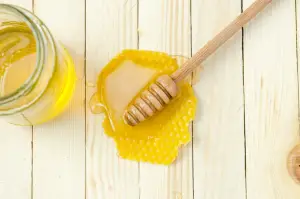
Honey. Honey is great on everything! Okay I am a little biased because I personally love the stuff. It tastes greats and has other uses has well, such as medicinal purposes. When stored properly this item will last forever.
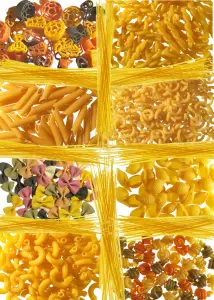
Pasta. When stored properly pasta can be stored for several years.
It has plenty of carbs, and a lot of it can be stored easily. Plus, it will feed a lot of people.
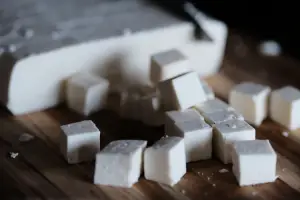
Sugar. A requirement that our bodies need and hey, it tastes good as well. Can also be used for bartering. Keep in an airtight container and it should last indefinitely.

Salt. Other than being a daily requirement, salt has another incredibly useful purpose. It can be used in preserving food when refrigeration is not available, such as meats. Because most bacteria and other organisms cannot live on salt, if stored properly it should have an indefinite shelf life.
No Refrigeration Required. I highly suggest learning alternative methods for preserving foods without refrigeration. Examples would be dehydration, curing(salting) meat, brining meat, smoking meat, and pressure canning.Depending on the type of food being processed and the preservation method used, some foods can last anywhere from a few months to years without refrigeration.
MRE. When it comes to Meals Ready to Eat, I am always ready to eat them. I think these have come a long way in terms of taste and I for one, actually enjoy them. While they do have a long shelf life, they are also expensive and should not be eaten at every meal for an extended amount of time. But they are great for quick emergency meals.
Other similar alternatives are emergency food bars which are compact and can be tastier.
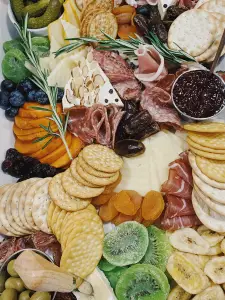
Freeze Dried Foods. These have become popular with many outdoors people because they are extremely lightweight. That is because all the water has been removed from the meal. To prepare, simply add the required amount of water (see I told you water would be important to have)
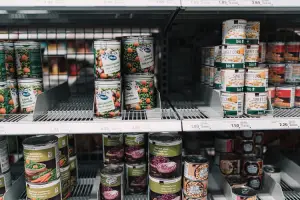
Canned Goods. A long shelf life, incredibly cheap and no need to cook the contents make canned goods a great food to store. Additionally, there is a wide variety of food choices available.
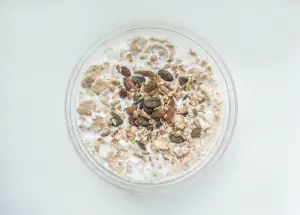
Oats. Are a cheap ingredient that can be use in a variety of recipes. They can be eaten plan as oatmeal or used in cookies or other dishes. They are filling and if stored properly, can last a long time.
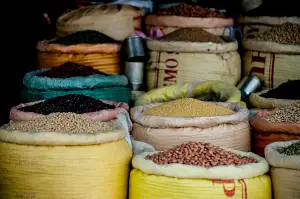
Dried beans. Beans are a good source of protein as well as having other nutritional value.They are cheap and go a long way in feeding a family. Quick tip, if you are on the move try soaking your beans in a water bottle attached to your pack.

Rice. Choose between what kind of rice you want but white rice will last the longest. It is cheap, feeds a lot of people and can last several years when stored properly.
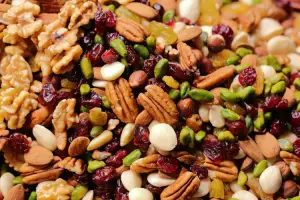
Nuts. Are a good source of protein, fat, and fiber. Different varieties will have different shelf lives. But I vacuumed sealed a bag of mix nuts and ate them a year later with no problem.

Flour. Who does not like baked goods? Cover your baking needs with this basic ingredient. Flour unopened will have a shelf life of one year. After it is opened it decreases to about eight months. If you want a longer shelf life, then invest in whole grains and a grinder to make your own flour.Do not forget the yeast!
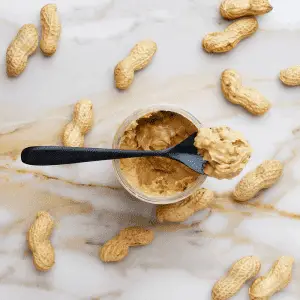
Peanut Butter. Mm, peanut butter, another one of my favorites, packed with protein and fats this is staple on my shelf. Unopened peanut butter can last one year and up. After opening it, if there is any discoloration or it has become thick (not as creamy) I would be cautious
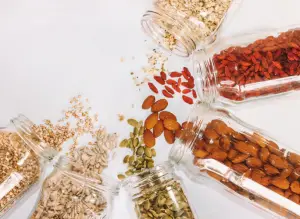
Seeds. Why not supplement your diet with some fresh veggies/fruits by storing seeds? Seeds are essential to store. I am not going to recommend what you should plant as that depends on your tastes and what grows in your region. However, I will recommend that you do your research and purchase heirloom seeds.

Coffee/Tea. While they do have their health benefits, coffee and tea are great comfort and bartering items. Afterall, drinking plain water gets a bit boring after a while.
Check out our most recommended Coffee stockpile product by MyPatriotSupply.com
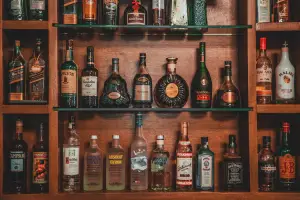
Liquor. Speaking of great comfort and barter items. Even if you do not drink, I would recommend having a bottle or two on hand. They have a long shelf life and would prove quite valuable as a bartering item.
Baking soda. Is used as in ingredient in baking and has a multitude of other use. Can be used as a general cleaner as well as toothpaste.
Powered foods and drinks. Examples would be powdered cheese, eggs, juices, cocoa, and milk. These products have a long shelf life and are easy to make.

Herbs and Spices. Some meals you will be making from items on this list might not be all that flavorful. Adding a little bit of spicelike garlic powder, salt, pepper, oregano, cinnamon, or basil will surely make the meal more enjoyable.
Cooking Grease. Do not forget cooking aids like store bought bacon grease, which can last up to a year when stored properly.
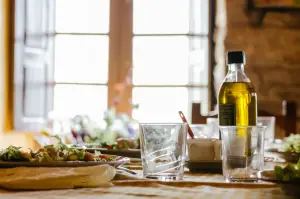
Olive oil. An alternative to grease would be cooking oils. I prefer olive oil as it has a host of health benefits. It will also last up to two years.
Hardtack. Hardtack is a simple bread like food made up of flour, water, and salt. It has an exceptionally low water content which makes it as hard as a brick. When vacuumed sealed it can last for years and years. When you are ready to eat it, I recommend soaking it for five to ten minutes in a cup of coffee, tea or soup.
Check out more details on how to make hardtack…

Comfort Foods. Everyone is different in what they considered treats but do not forget to add some goodies into your supplies. Not only can these be morale boosting during hard times, but they could also be good barter items. Chocolate or various candies are just two such examples.
Canned Pet Food. Don’t forget about pets! Canned pet food can be stored for approximately 2 years after the best-before date. Left longer, it can become toxic – and the same rules you would use for any type of canned, stored meat applies. Discard at the first signs of damage to the can.
Dried Pet Food. Dried pet foods can be kept for approximately 1 year longer than the stamped date says. Longer than this, and it might lose nutrients, develop mold or become potentially toxic when consumed by pets.
Dried Catnip. Although not a food, it can be a pet essential in times of survival. Dried catnip can last for up to 6 months when opened, although as much as 2 years when dried or sealed. Past this time, it’s only likely to go stale, much like dried tea.
Catnip Spray. Thanks to preservatives and carrier substances, catnip sprays make for good stockpiling items for pets – and can last for several years longer than its dried counterpart.
Wrap Up
As I said earlier this is not by any means a complete list of what one should have in their emergency supplies. But I think it has plenty of staples to get you going on creating the best list for you.
What do you consider your essential stockpile food items list – and what tips and tricks have you discovered for stockpiling food items for the long-term? Share your thoughts with SurvivalCache in the comments!
Blueprint: If you want an ultimate blueprint to putting together a stockpile that will last and be kept safe, then you need to check this video out.

